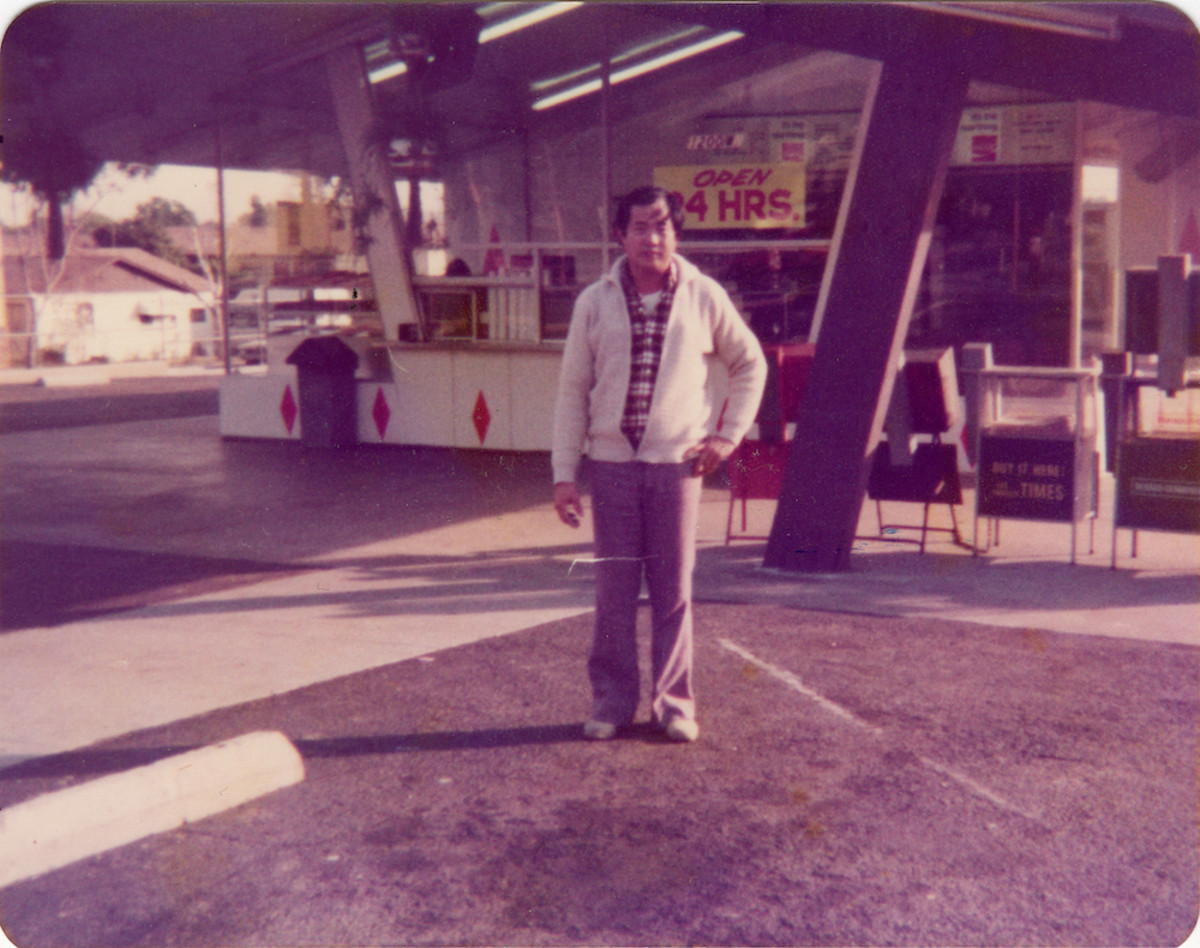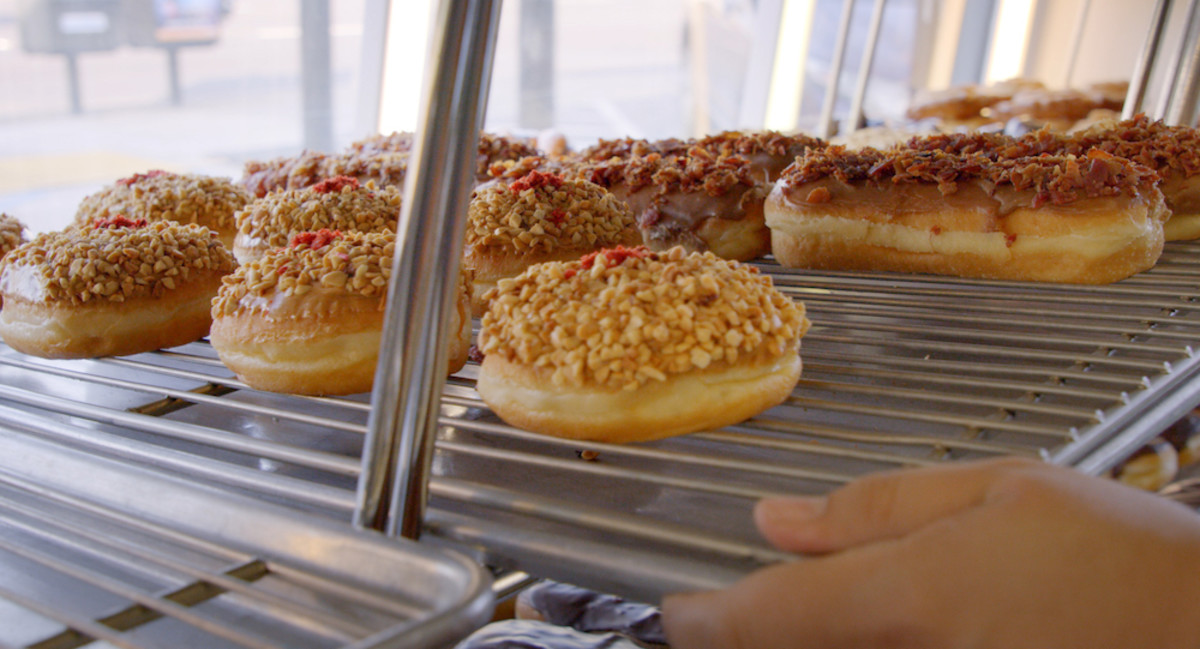Director, cinematographer and writer Alice Gu talks about her feature directorial debut, The Donut King, in an insightful discussion that includes DIY filmmaking, discovering the story and establishing truthful relationships with interviewees
SUSAN KOUGUELLNOV 3, 2020
Click to tweet this article to your friends and followers!

Director, cinematographer and writer Alice Gu talks about her feature directorial debut, The Donut King, in an insightful discussion that includes DIY filmmaking, discovering the story and establishing truthful relationships with interviewees.
The Donut King tells the unlikely story of Ngoy, a Cambodian refugee who arrived in America in 1975 with nothing and set out to build a multi-million-dollar empire by baking America’s favorite pastry, the donut. Ngoy soon found himself living a classic rags to riches narrative after sponsoring hundreds of visas for fellow Cambodian immigrants, helping them get on their feet in a new land by teaching them the ways of the donut business and amassing a small personal fortune. By the mid 1990’s, Cambodian-Americans owned nearly 80% of the donut industry as a result of his influence.
The Donut King is a story of tenacity, survival, redemption, and above all else, the power of the American Dream. The Donut King is executive produced by Academy Award-winner Freida Lee Mock and produced by Logan Content in association with Scott Free Productions.
ALICE GU (Director/DP/Writer) A Los Angeles native, Alice began her career as a Director of Photography, working with renowned directors Werner Herzog, Stacy Peralta, and Rory Kennedy, among others. “Take Every Wave: The Life of Laird Hamilton” made its premiere at the Sundance Film Festival in 2017, a documentary film lensed by Gu and directed by Academy Award-nominated director, Rory Kennedy.
KOUGUELL: I understand it was your nanny who introduced you to the concept of “Cambodian donuts” and Ted Ngoy’s story. What grabbed your attention about this story?
GU: When I read about Ted’s story there were several things that grabbed my attention—but not everything made it into the movie due to time, otherwise it would have been three hours long. First, he was a boy born in poverty in Cambodia. Second, in high school, he falls in love with the daughter of a high-ranking official and they have a whole Romeo and Juliet moment where they are forbidden to be together—he actually stabs himself three times and goes on a hunger strike and she takes pills, and they are both almost dead—and finally her parents send them off to live in the countryside.
I was only casually familiar with the atrocities that happened in Cambodia at that time. Ted escaped from that as a refugee penniless and within three years becoming a millionaire and then he lost it all and ended up destitute. His life was so topsy-turvy. Ted’s life read like a movie, like fiction. All of that appealed to me.
Also, the personal component resonated with me. I’m a child of Chinese parents who were forced to leave China with just the clothes on their back.

KOUGUELL: Tell me about the evolution of the project.
GU: This is a case of leap before you look and ignorance is bliss because if you knew how hard it was and all the challenges that would be coming your way, I think it would have been too daunting. Then I thought, I can do this, I’m a DP and I can shoot this, I can get a camera. And then taking a very much DIY approach to it.
KOUGUELL: How long was the shoot?
GU: We shot on and off over the course of eight to ten months. I would have loved to have compressed that, but it was very much DIY—when we had money and time available, we would go back and shoot this project.
KOUGUELL: When you planned out your documentary, did you work from an outline or any source material?
GU: When I met Ted—and that was meeting him over Facebook—we talked several times and he said he just wrote a book, a memoir that’s coming out in a month, and that he would give me a copy. I used that as our bible, a starting point of getting to know characters and getting familiar with everything. But, as we went along and started filming more and meeting more people, it really wasn’t just his book that we followed, we realized there was so much depth and so many other characters and substories we wanted to tell. We used Ted’s memoir as a beginning to research material and as a jumping off point, but the script itself revealed itself to us during the process.

KOUGUELL: How did you establish trust with your subjects, including Ted Ngoy and his family members and colleagues?
GU: That is a product of time. Ted was approaching 80 with nothing else to prove, nowhere to hide. He was a man in his golden years and reflecting on all the good and all the bad. When I approached him about making this documentary, I told him it’s not going to be all the good, it’s going to be warts and all—it’s going to be the good, bad and ugly and are you okay with that, and he said yes.
Over the next 12 months the trust deepened. There was a difference between our first interviews and when we filmed later; his guard was really let down. It was about having honest and true intentions yourself when making a film and that will show and reflect in your relationships and how you approach everything. The other element is persistence. You will get a lot of no’s in the beginning, like from the other characters who are in the film, and eventually after months go by, they say, “Oh, she’s still here? I guess she’s here to stay, and she’s still asking me to be interviewed.” It’s patience, persistence and really having true intentions.,
KOUGUELL: Final words to share about your project?
GU: I love documentaries and I loved them for such a long time. My editor and co-writer Carol Martori is passionate about documentaries and the art form, and we both knew early on this story is so complex and there are so many ways to tell it. There is an American dream story, there’s an immigrant story, a rags-to-riches story, a David-and-Goliath story, and a story about helping other refugees getting their start and rescuing them from refugee camps. There is also what we call the Donut Shop 2.0, the second generation. We have all of these stories, and the bigger immigrant story and history lesson, and we thought, how do we fit this all in here and not be a complete mess. It was a bit daunting.
We took inspiration from narrative. Our approach was to have a narrative structure, a narrative arc. We also wanted to do something fresh and different, and I hope that comes across, as an interesting way to tell the story.